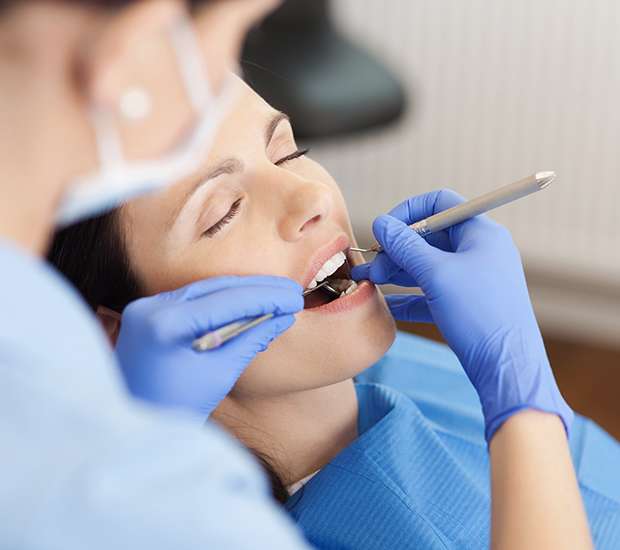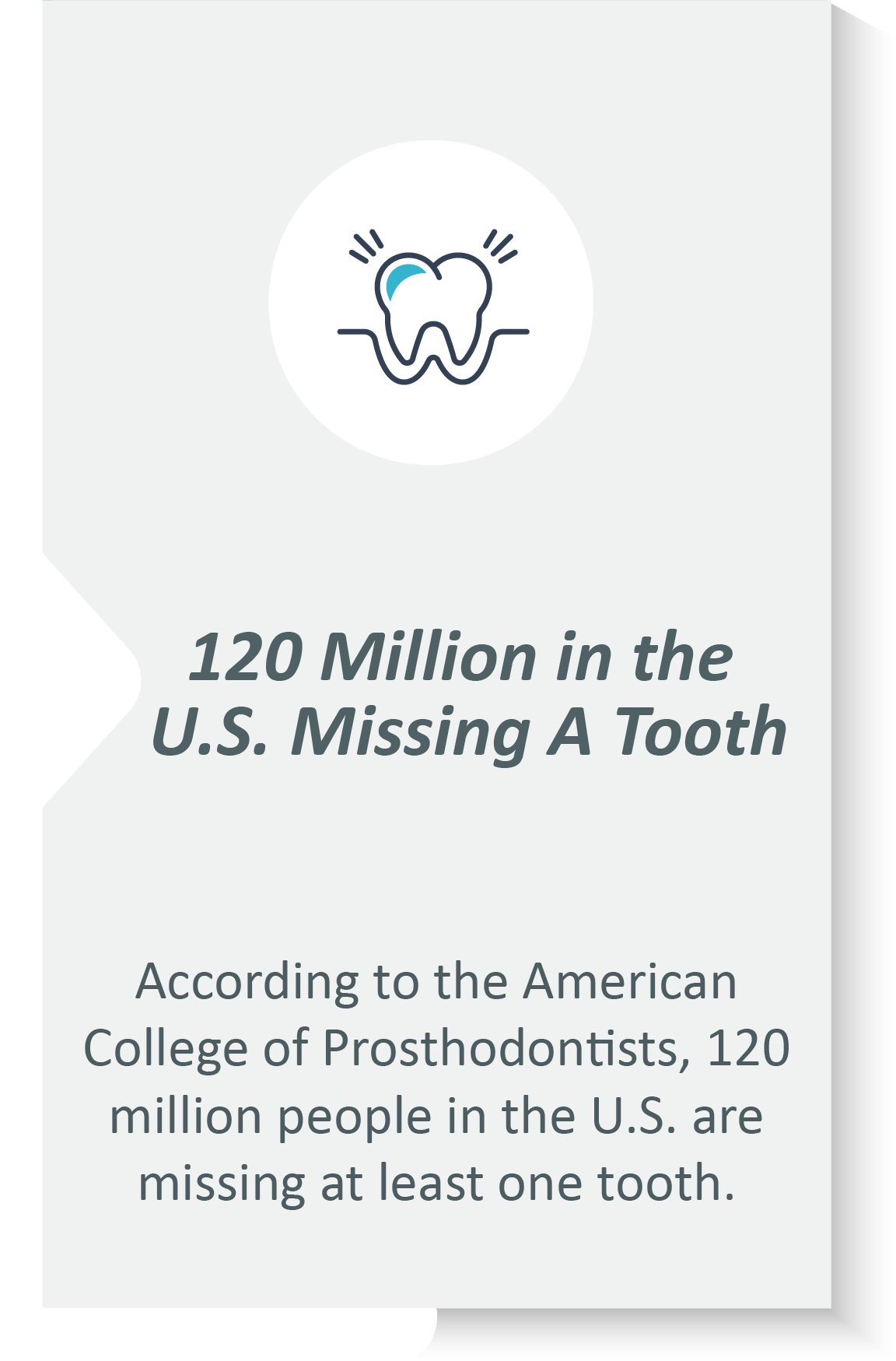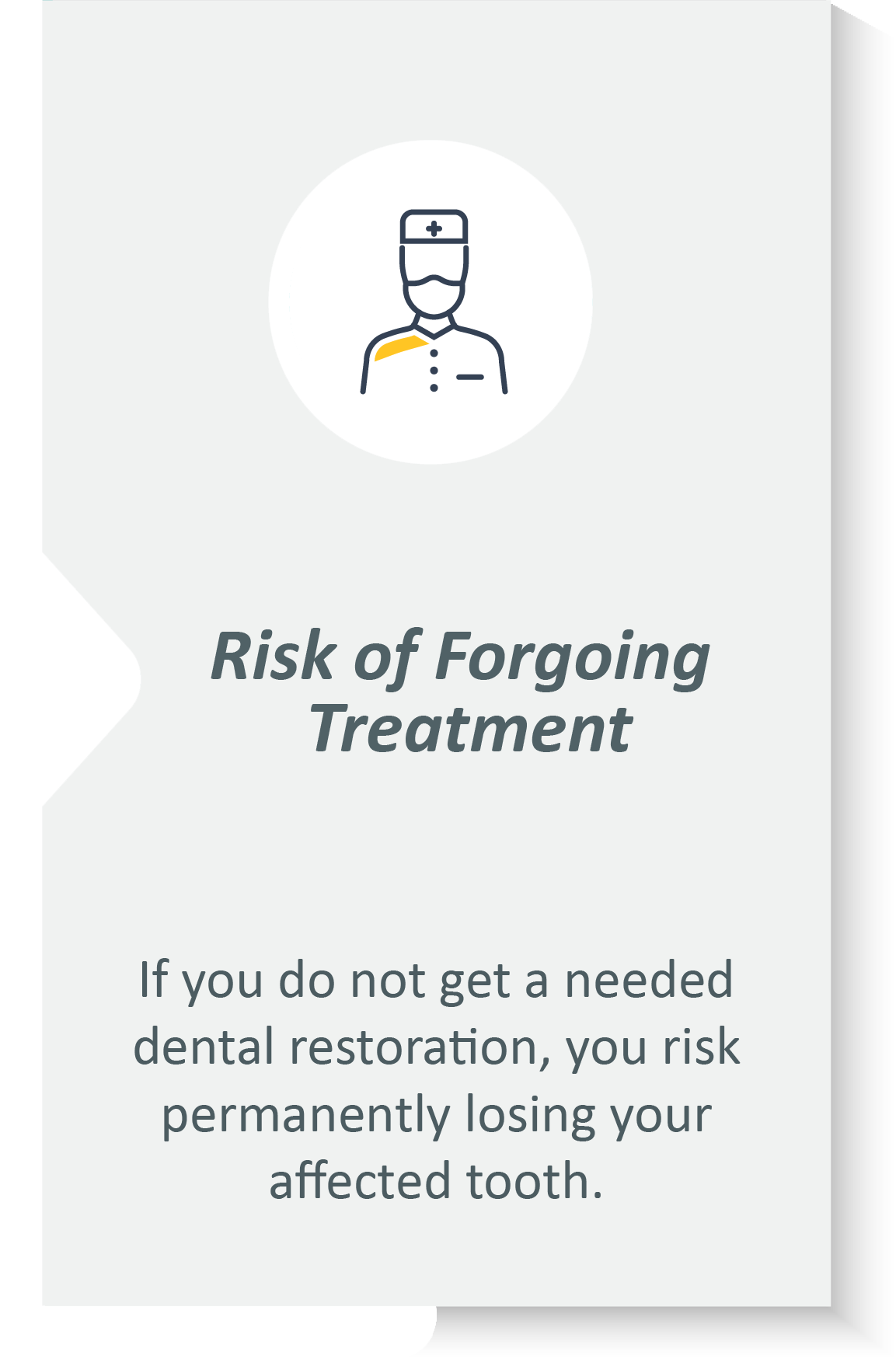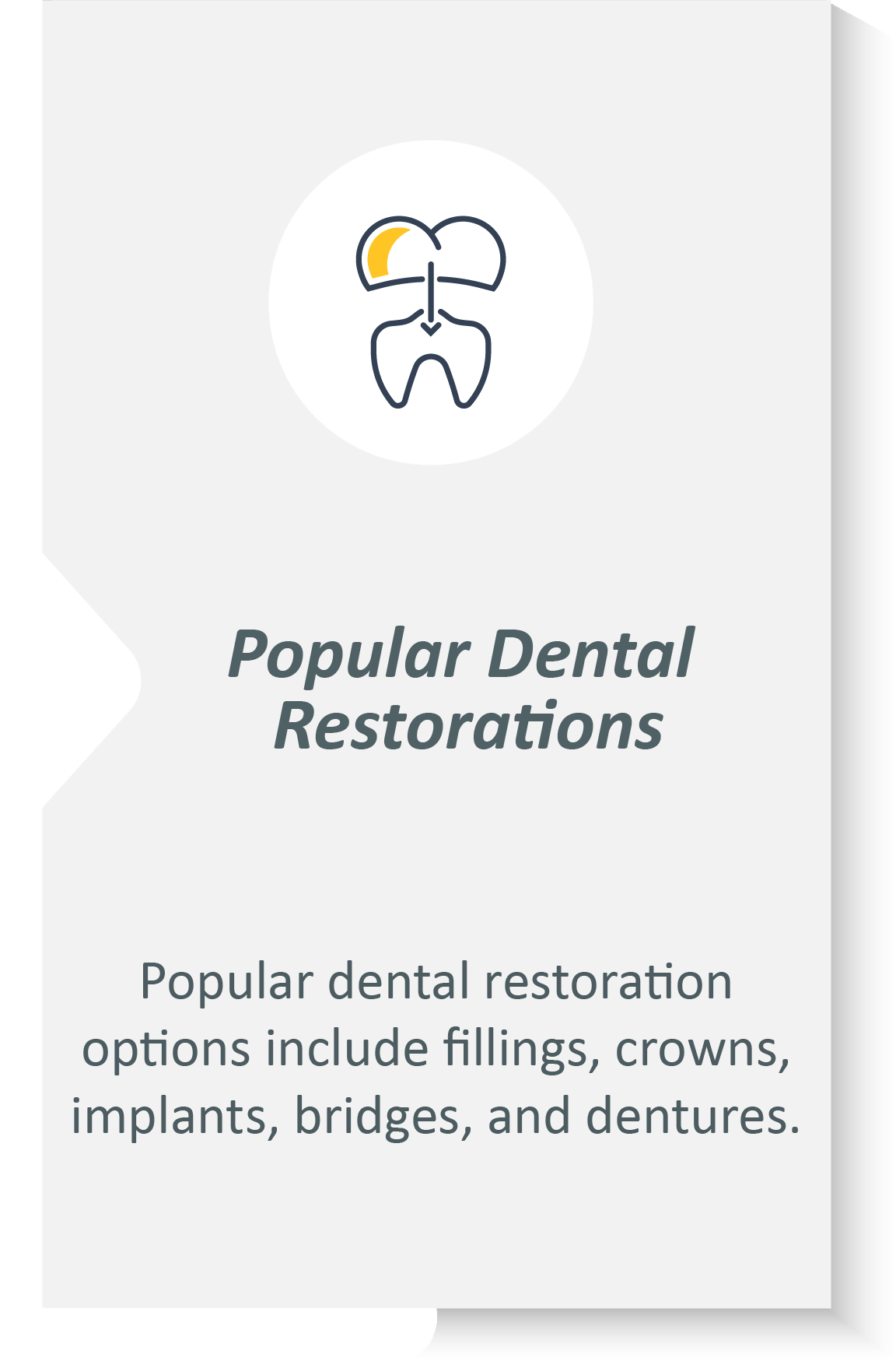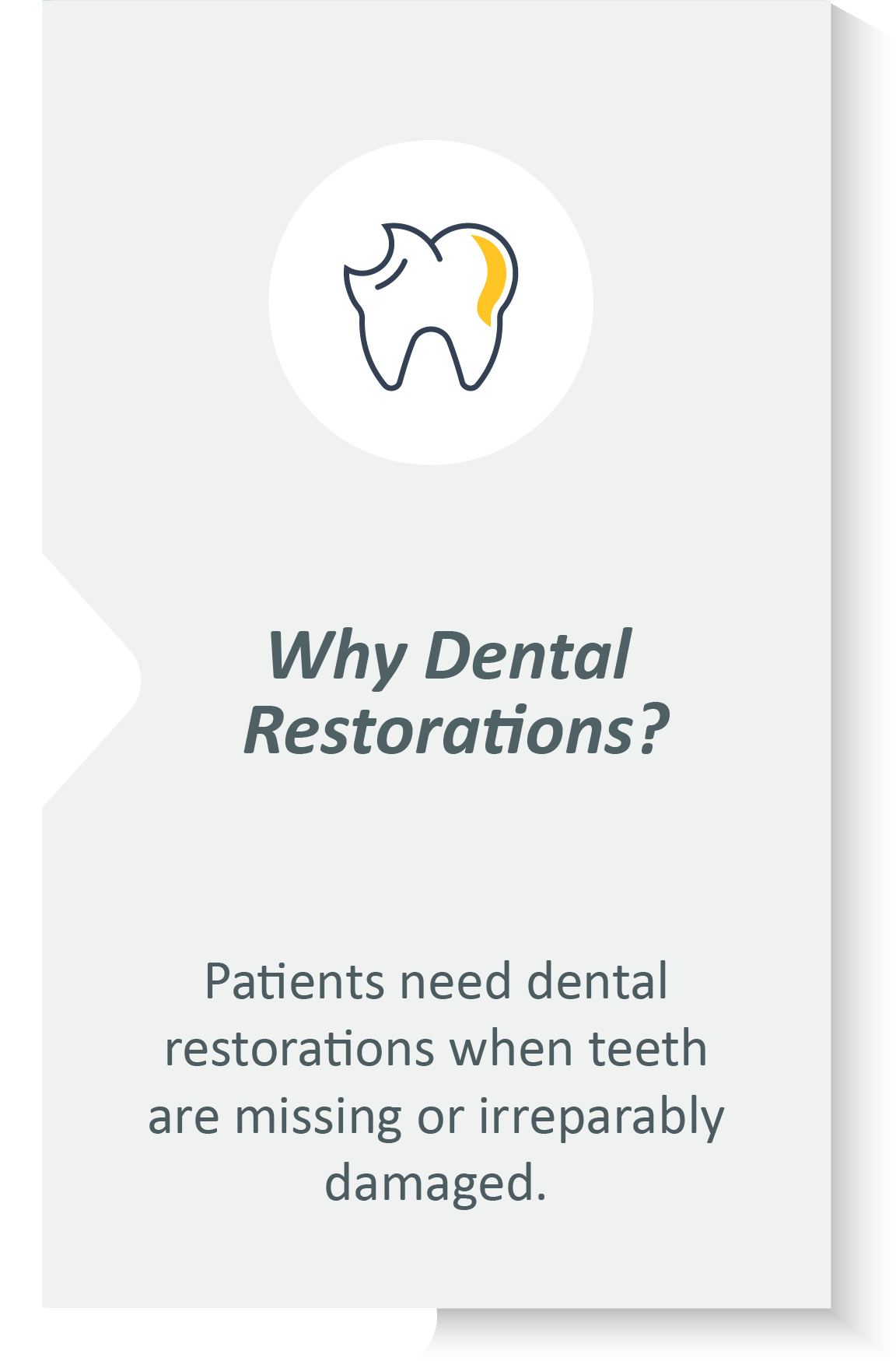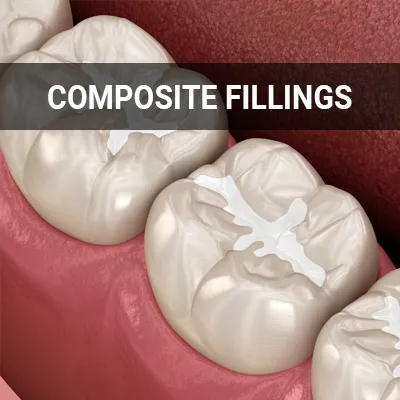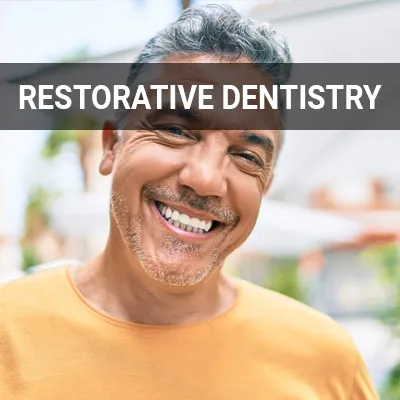Dental Restorations Livermore, CA
People with damaged or decayed tooth structure can benefit from dental restoration. These treatments can repair, restore, and rebuild smiles. Different restoration methods are available to restore varying levels of dental trauma.
Dental restoration is available at Livermore Dental Spa in Livermore and the surrounding area. Our team provides treatment to restore and protect your smile. Call us today at (925) 344-3993 to schedule an appointment or learn more about the services we offer.
Understanding Dental Restoration
Dental restoration aims to restore the functionality of the mouth and teeth. It includes various dental procedures that repair damaged or missing tooth structure resulting from poor oral hygiene, infection, or trauma to the teeth or gums. There are two types of dental restorations, direct and indirect.
Besides restoring the mouth to a functional state, dental restoration also aims to preserve as much of the patient's natural teeth as possible. Patients may experience missing tooth structure due to decay, chips or fractures, or deterioration of a previously placed restoration. Dental restorations can help fix such problems.
“Dental restoration aims to restore the functionality of the mouth and teeth.”
Direct Dental Restoration
A direct dental restoration is one that is created and placed entirely within the mouth. During this process, we will replace small amounts of damaged tooth structure with a filling. Once the filling is in place, our dentist will harden the material with ultraviolet light to create a permanent seal which restores tooth functionality by preventing reinfection or further damage. There are various types of filling options, including:
- Amalgam: Amalgam fillings consist of a mixture of mercury, tin, copper, or silver and are very durable but do not match the color of surrounding teeth.
- Cast gold: Cast gold fillings are strong enough to last for longer than 15 years but are more expensive than other filling materials.
- Ceramic: Ceramic fillings are usually made of porcelain and are more resistant to staining than composite fillings.
- Composite: Composite fillings provide durability and strength for small to mid-size cavities and are tooth-colored to appear more natural.
- Glass ionomer: Glass ionomer fillings consist of silicate glass-powder used in temporary fillings, decay around the gum lines, or baby teeth.
“A direct dental restoration is one that is created and placed entirely within the mouth.”
Understanding Indirect Dental Restoration
In contrast to a direct dental restoration, an indirect restoration must be created outside of the mouth before being applied to teeth. Types of indirect restorations include the following:
- Veneers: A veneer is a thin shell that covers the front of a tooth, restoring the visible appearance of a tooth that has been damaged by stains or chips.
- Inlays: An inlay is a restoration created to fill in part of the tooth cavity that has been prepared. It can span tooth cusps but does not include them.
- Onlays: An onlay is a restoration created to fill in part of the tooth cavity that includes one or more tooth cusps, so it is always larger than an inlay.
- Implants: An implant is a metal rod inserted into the bone socket and covered with a replacement tooth, such as a crown.
- Crowns: A tooth-shaped crown can be placed over a damaged tooth or onto a dental implant rod to restore a tooth’s function and appearance.
- Bridges: A bridge is a set of false teeth that fills in gaps left by missing teeth. A bridge can be permanently anchored into place by flanking crowns.
“A tooth-shaped crown can be placed over a damaged tooth, or onto a dental implant rod, to restore a tooth’s function and appearance.”
Check out what others are saying about our dental services on Yelp: Dental Restorations in Livermore, CA
When a Dental Restoration Is Necessary
Dental restoration can help weakened teeth due to severe decay or damage and help prevent further complications. Direct dental restorations or fillings are necessary to stop the decay process while leaving the teeth intact. Fillings can also restore fractured, broken teeth, or worn down teeth resulting from misuse such as nail-biting or tooth grinding.
Indirect dental restorations are necessary when a filling is not enough to restore teeth functionality. Crowns are good restorative options for unstable teeth, while a bridge can replace multiple damaged teeth to restore proper chewing function. Additionally, a dental implant can replace a missing tooth and prevent problems like jawbone erosion and impaired chewing.
“Dental restoration can help weakened teeth due to severe decay or damage and help prevent further complications.”
Questions Answered on This Page
Q. What is dental restoration?
Q. What is a direct dental restoration?
Q. When is a dental restoration necessary?
Q. What are indirect dental restorations?
Q. Who can receive a dental restoration?
People Also Ask
Q. What substances and habits may cause someone to get a smile makeover?
Q. What are the benefits of restoration dentistry?
Q. What can a dentist do to fix my chipped tooth?
Eligibility for Dental Restoration
Patients experiencing damage to one or more teeth due to decay, chipping, or trauma are likely eligible for a dental restoration. Depending on their specific situation, Livermore Dental Spa will work with each patient to determine which restorative option is right for them. Having a conversation about personal preferences is particularly important if the restoration occurs in the front of the mouth, where a tooth is more visible.
Children and adults are both candidates for dental restorations. A child may benefit more from a direct dental restoration, if possible, as it involves fewer steps. Patients that are pregnant should talk to their dentist about alternative options, but the American Dental Association reports that dental procedures involving anesthetics are safe during pregnancy.
“Children and adults are both candidates for dental restorations.”
Frequently Asked Questions
Q. Is a dental amalgam safe?
A. According to the American Dental Association (ADA), dental organizations worldwide agree that amalgams are safe restorative dental materials. Over the years, there have been reports of various negative health effects associated with amalgam, but many scientific reviews have reaffirmed their safety.
Q. What are all the types of dental restorations?
A. Dental restorations are any treatments done to restore the function and/or appearance of the teeth. Restorations can include fillings, crowns, bridges, dental implants, inlays and onlays, and composite or dental bonding.
Q. How common are crowns?
A. If you are considering getting a crown placed, or your dentist has recommended one, you are not alone. According to the American Academy of Dentistry Journal, about 40 million crowns are placed each year. Dentists of all types are generally familiar with the procedure.
Q. What is the difference between an inlay and onlay?
A. While inlays and onlays are both types of indirect dental restorations, they differ in size. An inlay is created to fill in a tooth cavity that occurs between tooth cusps. An onlay is created to fill in a tooth cavity that includes one or more tooth cusps, so by definition, it is more expansive than an inlay.
Q. What are the steps involved in amalgam dental filling?
A. During an amalgam dental filling, your dentist will numb you first to make sure that you do not feel discomfort during the procedure. Then, your dentist will use an instrument such as a drill or laser to remove any decayed area. Your dentist will test to ensure that all of the decay has been removed and clean out the debris. Lastly, your dentist will apply the filling material and polish the tooth.
Dental Terminology
Helpful Related Links
- American Dental Association (ADA). Glossary of Dental Clinical Terms. 2024
- American Academy of Cosmetic Dentistry® (AACD). Home Page. 2024
- WebMD. WebMD’s Oral Care Guide. 2024
About our business, license, and website security
- Livermore Dental Spa was established in 2023.
- We accept the following payment methods: American Express, Cash, Discover, MasterCard, and Visa
- We serve patients from the following counties: Alameda County, Contra Costa County and San Joaquin County
- We serve patients from the following cities: Livermore, Alameda, Pleasanton, Dublin, Ulmar, Tracy, San Ramon, Danville, Mountain House and Castro Valley
- CA (License #101519). View License Information and Specifics
- National Provider Identifier Database (1679095681). View NPI Registry Information
- Healthgrades. View Background Information and Reviews
- Norton Safe Web. View Details
- Trend Micro Site Safety Center. View Details
Back to top of Dental Restorations
